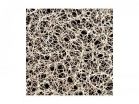(Press-News.org) The basketball is in your hands. The score is tied and there are only a few seconds left on the clock. You have the ball about 10 feet away from the basket on the right side of the court, just outside the free-throw lane. It's decision time: Is it best to try a direct shot to win the game on a swish? Or do you use the backboard and bank home the winning basket?
Time's up; the buzzer sounds. Were you a hero or a goat?
New research by engineers at North Carolina State University show that you had a better chance of scoring that particular game-winning bucket with a bank shot than with a direct shot.
After simulating one million shots with a computer, the NC State researchers show that the bank shot can be 20 percent more effective when shooting at many angles up to a distance of about 12 feet from the basket. Bank shots are also more effective from the "wing" areas between the three-point line and the free-throw lane. However, straight-on shots – those corresponding to the area around the free-throw line – from further than 12 feet are not as well suited for bank shots.
The researchers also found the optimal points where the simulated made baskets were aimed. The results show the optimal aim points make a "V" shape near the top center of the backboard's "square," which is actually a 24-inch by 18-inch rectangle which surrounds the rim. Away from the free-throw lane, these aim points were higher on the backboard and thus further from the rim. From closer to the free-throw lane, the aim points were lower on the backboard and closer to the rim.
The researchers also discovered that if you imagine a vertical line 3.327 inches behind the backboard and found where it crossed the aim point on the "V" shape on the backboard, you'd find the optimal spot to bank the basketball to score a basket.
"Basketball players can't take a slide rule out on the court, but our study suggests that a few intuitive assumptions about bank shots are true," says Dr. Larry Silverberg, professor of mechanical and aerospace engineering at NC State and the lead author of a paper describing the research. "They can be more effective than direct shots, especially from certain areas of the court – and we show which areas on the court and where the ball needs to hit the backboard."
The researchers made a few assumptions while conducting the study. They used a men's basketball, which is slightly bigger and heavier than a women's basketball; launched the simulated shots from 6, 7, and 8 feet above the ground; and imparted 3 hertz of backspin – which means three revolutions per second – on the shots. The latter variable was shown in previous research to be optimal for successfully converting a free throw.
The research was published in the Journal of Quantitative Analysis in Sports. Lecturer Dr. Chau M. Tran and undergraduate student Taylor M. Adams co-authored the paper with Silverberg.
INFORMATION:
The Department of Mechanical and Aerospace Engineering is part of NC State's College of Engineering.
Note to editors: An abstract of the paper follows.
"Optimal Targets for the Bank Shot in Men's Basketball"
Authors: Larry M. Silverberg, Chau M. Tran and Taylor M. Adams, North Carolina State University
Published: Volume 7, Issue 1, 2011, in Journal of Quantitative Analysis in Sports
Abstract: The purpose of this study was to gain an understanding of the bank shot and ultimately determine the optimal target points on the backboard for the bank shot in men's basketball. The study used over one million three-dimensional simulations of basketball trajectories. Four launch variables were studied: launch height, launch speed, launch angle, and aim angle. The shooter's statistical characteristics were prescribed to yield a 70 percent free throw when launching the ball seven feet above the ground with 3 Hz of back spin. We found that the shooter can select a bank shot over a direct shot with as much as a 20 percent advantage. The distribution over the court of preferences of the bank shot over the direct shot was determined. It was also shown that there is an aim line on the backboard independent of the shooter's location on the court. We also found that at 3.326 inches behind the backboard, there exists a vertical axis that aids in finding the optimal target point on the backboard. The optimal target point is the crossing of the vertical axis and the aim line that is in the shooter's line of sight.
The physics of bank shots
2011-03-11
ELSE PRESS RELEASES FROM THIS DATE:
Study shows new treatment strategy effective for certain lung cancers
2011-03-11
New Orleans, LA – LSU oncologist Vince D. Cataldo, MD, is the lead author of a review article reporting two chemotherapy drugs now indicated for second and third-line therapy in patients with advanced non-small-cell lung cancer are remarkably effective in treating a certain subset of these patients. Dr. Cataldo, a Clinical Assistant Professor of Medicine at LSU Health Sciences Center New Orleans School of Medicine, practicing at LSU's Earl K. Long Medical Center and Hematology-Oncology Clinic in Baton Rouge, and his colleagues say these drugs should be considered as a first-line ...
New commission confronts threats to food security from climate change
2011-03-11
COPENHAGEN (11 March 2011) — Recent droughts and floods have contributed to increases in food prices. These are pushing millions more people into poverty and hunger, and are contributing to political instability and civil unrest. Climate change is predicted to increase these threats to food security and stability. Responding to this, the world's largest agriculture research consortium today announced the creation of a new Commission on Sustainable Agriculture and Climate Change.
Chaired by the United Kingdom's Chief Scientific Adviser, Professor Sir John Beddington, ...
Earth's biodiversity: What do we know and where are we headed?
2011-03-11
Earth's biodiversity—the number of microorganisms, plants, and animals, their genes, and their ecosystems (such as rainforests and grasslands)—is declining at an alarming rate, even faster than the last mass extinction 65 million years ago. In fact, two thirds of the terrestrial species that exist today are estimated to be extinct by the end of this century. Humans are an integral part of this extensive network of life. We depend on biodiversity for goods and services; we impact biodiversity via rapidly expanding human population growth, consumption of resources, and ...
CWRU researcher sends message to postmenopausal women: 'Increase yearly dental checkups'
2011-03-11
Postmenopausal women have a new health message to hear. Two annual dental checkups aren't enough. Older women need more, according to research findings from the Case Western Reserve University School of Dental Medicine and the Cleveland Clinic.
That message comes from a comparison study of women on and off bone-strengthening bisphosphonate therapies for osteoporosis.
Leena Palomo, assistant professor of periodontics from the dental school, and Maria Clarinda Beunocamino-Francisco from the Center for Specialized Women's Health at the clinic, set out to study the ...
UTHealth study: Stem cells may provide treatment for brain injuries
2011-03-11
HOUSTON – (March 10, 2011) – Stem cells derived from a patient's own bone marrow were safely used in pediatric patients with traumatic brain injury (TBI), according to results of a Phase I clinical trial at The University of Texas Health Science Center at Houston (UTHealth). The results were published in this month's issue of Neurosurgery, the journal of the Congress of Neurological Surgeons.
"Our data demonstrate that the acute harvest of bone marrow and infusion of bone marrow mononuclear cells to acutely treat severe TBI in children is safe," said Charles S. Cox, Jr., ...
New study reveals aerosol plumes downwind of the Deepwater Horizon oil spill
2011-03-11
MIAMI – March 10, 2011 -- Scientists from the University of Miami (UM) Rosenstiel School of Marine & Atmospheric Science were part of a national research team to find two plumes of oil-based pollutants downwind of the BP Deep Water Horizon oil spill. In a study published in this week's issue of the journal Science, the research team offers new insight into the mechanism by which the crude oil traveled from the sea surface to the atmosphere.
The National Oceanic and Atmospheric Administration (NOAA)-led research team collected data of atmosphere gas and aerosol concentrations ...
Research suggests HIV-infected patients at higher risk for bone fractures
2011-03-11
[EMBARGOED FOR MARCH 11, 2011] Low bone mineral density in HIV-infected patients is common and raises concerns about increased risks of fracture. Although there have been several studies regarding bone mineral density, there have been few data on rates of fracture in this population. A new study published in Clinical Infectious Diseases and available online (http://www.oxfordjournals.org/our_journals/cid/ciq242.pdf) examined differences in the rates of bone fractures between HIV-infected patients and the general population and found higher rates of fracture among HIV ...
Simple blood test detects early emphysema in smokers before symptoms appear
2011-03-11
NEW YORK (March 11, 2011) -- During a regular annual physical exam, blood is usually drawn to check the health of a person's heart, kidneys and liver. Now, researchers at NewYork-Presbyterian Hospital/Weill Cornell Medical Center say a blood test that detects the early development of emphysema -- well before symptoms occur -- may someday also be offered.
In the March 14 online edition of the American Journal of Respiratory and Critical Care Medicine, the researchers say that because most cases of emphysema are caused by smoking, the test they are developing can warn smokers ...
New measurement into biological polymer networks
2011-03-11
The development of a new measurement technology under a research project funded by the Air Force Office of Scientific Research and the National Science Foundation is probing the structure of composite and biological materials.
"Our results have provided some of the first microscopic insights into a sixty year old puzzle about the way polymeric networks react to repeated shear strains," said Dr. Daniel Blair, Assistant Professor, and principal investigator of the Soft Matter Group in the Department of Physics at Georgetown University.
Blair, Professor Andreas Bausch ...
Prompt Proofing Blog Post: More on the Dreaded Hyphen!
2011-03-11
Still worried about hyphens? Rearranging sentences to avoid the issue?
It's all about clarity - that is the main point of grammar; if your sentence is ambiguous, then you've failed to communicate. Look at the headline below (courtesy of Edit, Edit, Edit):
Policeman Helps Dog Bite Victim
See how a hyphen would clear this up?
Hyphens frequently provide clarity in a sentence that could otherwise be ambiguous.
A "small-business owner" is not necessarily the same as a "small business owner".
When dealing with compound adjectives, a good rule of thumb is to ...




